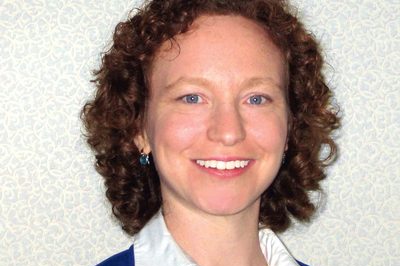Only two out of 10 elementary-school students have learned about same-sex-headed families, according to a new study commissioned by the Gay, Lesbian and Straight Education Network. Considering that same-sex families with children live in 96 percent of U.S. counties, we clearly have a failure to teach children about the world and people around them.
In its study, “Playgrounds and Prejudice: Elementary School Climate in the United States,” GLSEN found that in classroom discussions of families, nearly 90 percent of elementary-school teachers had taught students about different types of families — but less than a quarter included LGB parents, and less than 10 percent included transgender parents.
Only a quarter reported “having personally engaged in efforts to create a safe and supportive classroom environment for families with LGBT parents.”
That might be because less than one quarter of teachers received training on families with LGBT parents, and just over a third on gender issues — even though 85 percent had received training on other diversity matters.
The study was conducted by Harris Interactive on behalf of GLSEN, using online surveys of 1,065 school students in third to sixth grades and 1,099 teachers of kindergarten to sixth grades.
On the positive side, eight in 10 teachers said they would feel comfortable addressing name-calling, bullying or harassment of students perceived to be LGB or gender nonconforming. That is a vital step. But less than half of the teachers said they felt comfortable responding to questions from students about LGB people, and even less to questions about transgender people.
If teachers can’t answer questions about LGBT people, however, their ability to “address” anti-LGBT bullying will never rise much above “Stop because I said so” — and while that is sometimes a necessary approach (as every parent knows), it only goes so far. Unless schools also promote a better understanding of diverse people and communities, they will never address the root causes of bullying.
One resource that may help is the new “Ready, Set, Respect!” GLSEN’s Elementary School Toolkit.
Additionally, the HRC’s Welcoming Schools initiative that piloted in 2007, has offered its materials online for several years — including, most recently, “What Do You Know? Six to 12-year-olds talk about gays and lesbians,” a short professional-development film for school staff and parents. And educational film company Groundspark has produced numerous LGBT-inclusive diversity-education films since 1996, when “It’s Elementary” showed elementary-school teachers and their experiences talking about LGB families. The award-winning 2005 film “That’s a Family!” features elementary-school children who are being raised by parents of different races or religions, adoptive, single, divorced and gay or lesbian parents and grandparents.
The problem is not a lack of resources — although more are always welcome — but rather a lack of desire, or the misperception that we don’t need to use them with children so young.
We do need to use them, however. GLSEN’s survey found that homophobic slurs start early. Almost half of the elementary-school teachers and students surveyed reported regularly hearing “gay” in a negative way, “spaz” or “retard.” About one quarter reported regularly hearing students use homophobic slurs, such as “fag” or “lesbo,” as well as negative comments about race or ethnicity.
Three-fourths of the students reported that “students at their school are called names, made fun of or bullied with at least some regularity.” Twenty-one percent said this was because the targeted students were thought to be gay, and 23 percent said it was because the students didn’t conform to traditional gender norms/roles.
To those who say elementary students are too young to learn about LGBT people, I say: They already know about them — but mostly based on slurs and misconceptions.
Teachers might seem to bear the brunt of blame — but that is misleading and overly simplistic. Administrators, district officials and even state officials are also responsible for setting curricula, choosing materials and creating an inclusive environment.
However, the main drivers of change must be parents. We can inform teachers and school administrators about resources, and recommend they be included in teacher training. We can talk with school-board officials and let them know inclusion matters — and it impacts our voting.
More critically, we parents can educate ourselves and make sure our children know that families come in many forms, and people express gender in different ways.
LGBT parents can also help our neighbors and friends understand the importance of LGBT inclusion — and help them find language to discuss it with their families.
Life may “get better” as teens get older, as the well-known awareness project says. But there’s no reason we can’t try to make it good right from the start.
Dana Rudolph is founder and publisher of Mombian (www.mombian.com), a blog and resource directory for LGBT parents.

